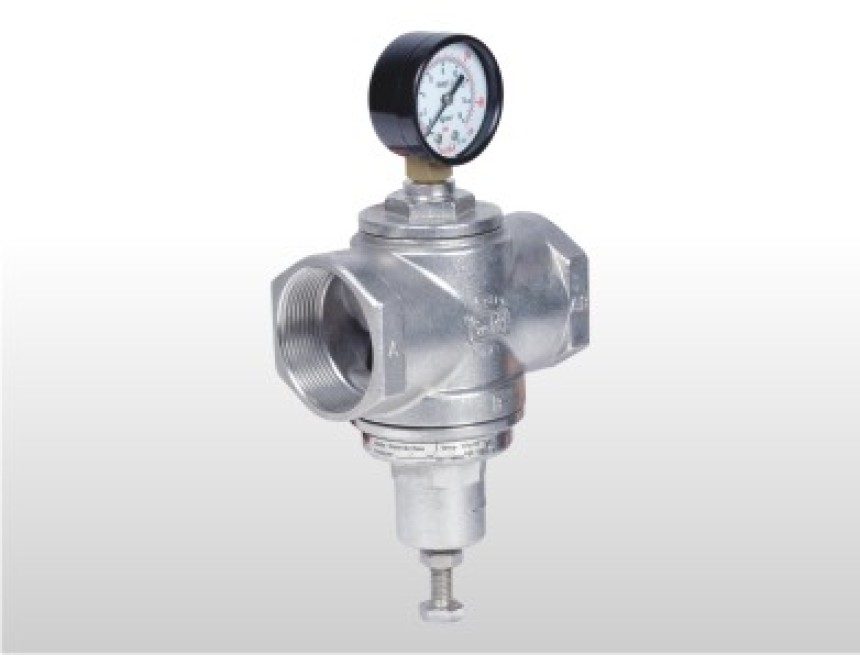
Pressure Reducing Valves Everything You Need to Know
Introduction: Pressure reducing valves (PRVs) are important components in many industrial and residential applications. They are designed to reduce the pressure of fluid or gas flowing through a system, and maintain it at a consistent level. We will also introduce Aira Euro, a trusted provider of high-quality PRVs.
Introduction:
Pressure reducing valves (PRVs) are important components in many industrial and residential applications. They are designed to reduce the pressure of fluid or gas flowing through a system, and maintain it at a consistent level. We will also introduce Aira Euro, a trusted provider of high-quality PRVs.
What Are Pressure Reducing Valves (PRVs)?
PRVs are commonly used in various applications such as water supply systems, steam pipelines, gas distribution systems, and HVAC systems. They are designed to maintain a constant and safe pressure level, regardless of fluctuations in the upstream pressure.
How Do Pressure Reducing Valves Work?
PRVs operate based on a simple principle: they reduce the pressure of the fluid or gas passing through them by restricting the flow. The valve is typically equipped with a diaphragm or a piston that senses changes in the upstream pressure and adjusts the valve's position to maintain a constant downstream pressure. When the upstream pressure increases, the valve restricts the flow by partially closing, and when the upstream pressure decreases, the valve opens wider to allow more fluid or gas to flow through.
Why Are Pressure Reducing Valves Necessary?
PRVs are necessary because they ensure that downstream systems receive a consistent and safe pressure level, regardless of upstream pressure fluctuations. Without a PRV, excessive pressure can damage equipment, cause leaks, and create safety hazards. Additionally, a consistent pressure level can help maintain system efficiency, reduce energy consumption, and increase the lifespan of system components.
Types of Pressure Reducing Valves
There are several types of PRVs available, each with unique features and applications. The most common types include direct-acting PRVs, pilot-operated PRVs, and balanced PRVs. Direct-acting PRVs use a spring-loaded mechanism to control the valve's position, while pilot-operated PRVs use a separate pilot valve to control the main valve's position. Balanced PRVs are designed to maintain a constant downstream pressure, regardless of upstream pressure variations, and are commonly used in high-pressure applications.
Installation and Maintenance of Pressure Reducing Valves
Proper installation and maintenance of PRVs are critical to ensuring their long-term performance and safety. Before installation, it is essential to select the appropriate PRV for the specific application and system requirements. The valve should be installed as close to the downstream system as possible to ensure accurate pressure regulation. Regular maintenance, including inspection, cleaning, and replacement of worn parts, is also essential to prevent valve failure and ensure consistent pressure regulation.
Choosing the Right Pressure Reducing Valve
Choosing the right PRV involves considering several factors, including the application, the required pressure range, the flow rate, and the fluid or gas properties. It is essential to select a PRV with the appropriate size, pressure range, and flow rate to ensure accurate pressure regulation and prevent valve failure. Additionally, it is important to consider the valve's materials of construction, compatibility with the fluid or gas being regulated, and any industry-specific regulations or standards that apply.
Applications of Pressure Reducing Valves
They are commonly used to regulate pressure in process systems, control valve actuation, protect equipment from overpressure, and maintain a constant and safe pressure level in downstream systems.
Aira Euro: Your Trusted Provider of Pressure Reducing Valves
Aira Euro is a leading provider of high-quality pressure reducing valves and other fluid control solutions. With over 20 years of experience in the industry, Aira Euro offers a wide range of PRVs, including direct-acting, pilot-operated, and balanced valves, in various sizes and materials of construction. Additionally, Aira Euro offers expert technical support, customization options, and competitive pricing, making them a trusted partner for all your pressure reducing valve needs.
Conclusion:
Pressure reducing valves are essential components in many industrial and residential applications, providing accurate pressure regulation, increased system efficiency, and improved safety. With various types, sizes, and materials available, selecting the right PRV can be a challenging task. However, by considering the application, required pressure range, flow rate, and other factors, you can choose a PRV that meets your specific needs. Additionally, working with a trusted provider like Aira Euro can help ensure that you receive high-quality PRVs, expert technical support, and customized solutions to meet your unique requirements.
Need help in growing your business? If you care for your business and want to see it at the top like them, you can contact Grow Media Digital. Grow Media Digital is a one-stop solution for every digital need. For More Details, Visit Our Official Website: https://www.growmedia.digital/





